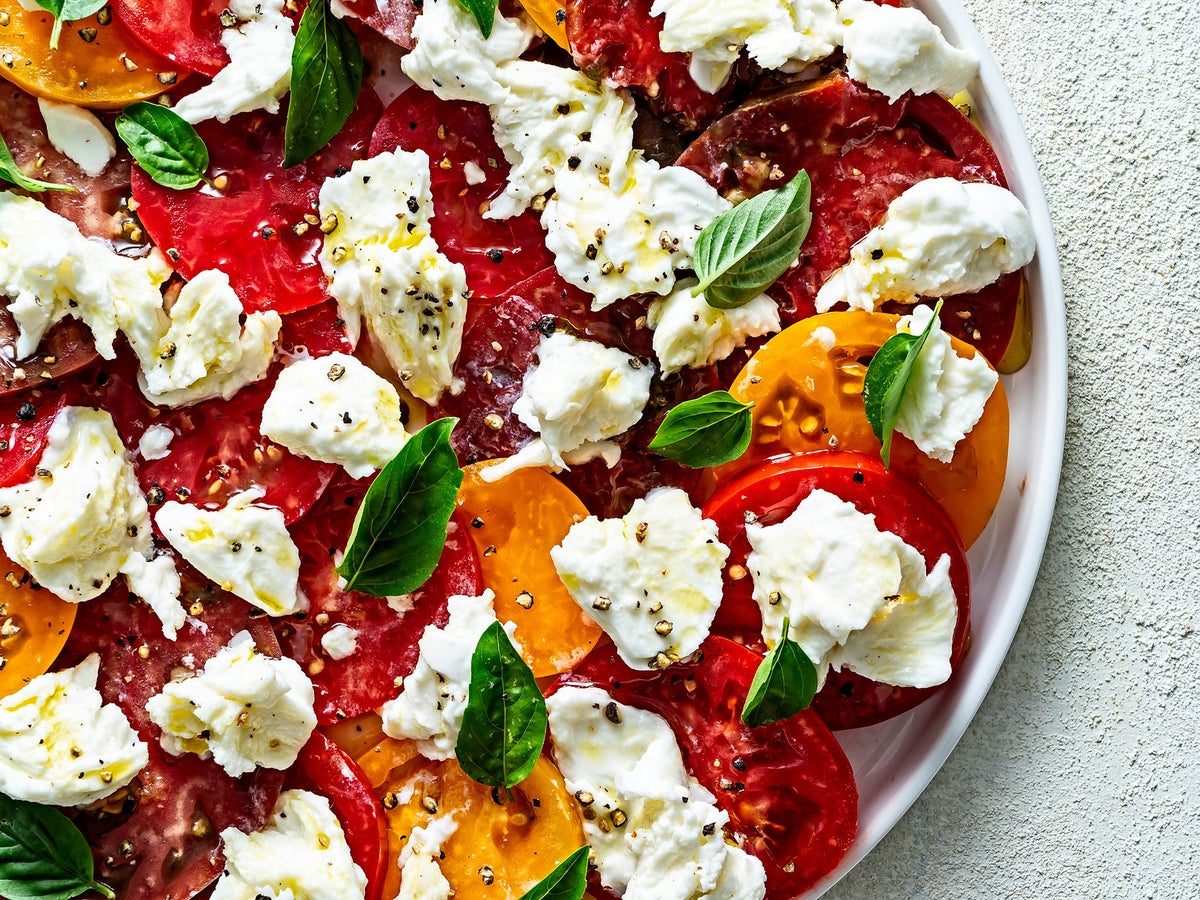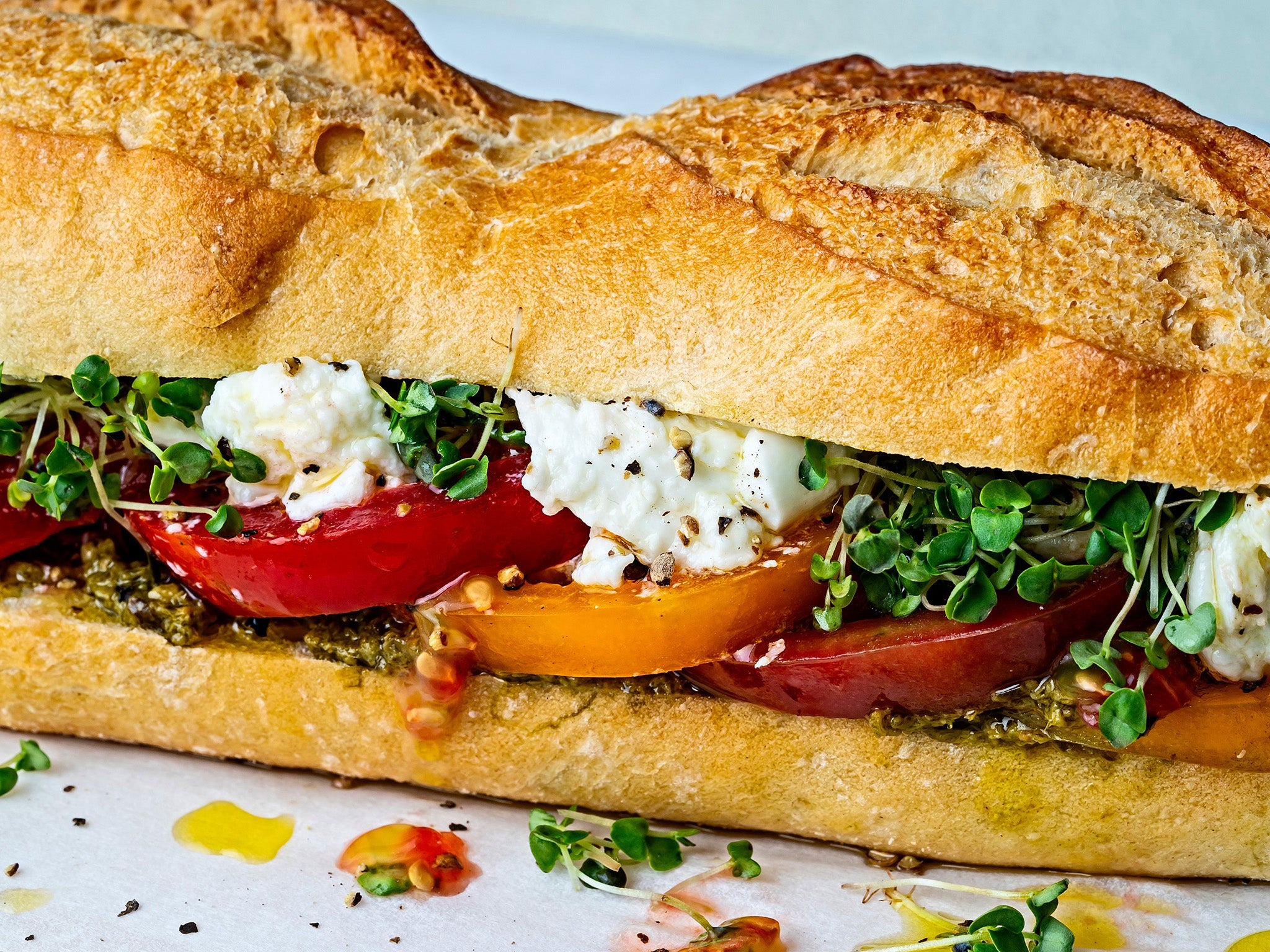
I’m a firm believer in the theory that sometimes the dishes that taste the best are the ones that require the least amount of work. And that’s not only because these days, whether in the kitchen or not, I feel like I’m on the constant hamster wheel of life with no break in sight.
It’s also because when you have amazing ingredients, there’s not much you need to do to them to make them shine.
That’s especially true when it comes to Caprese salad, the signature Italian dish of tomatoes, mozzarella and basil that is just about everything I want to eat right now.
A successful Caprese rests largely on “the quality of ingredients”, says chef Amy Brandwein. I’m offering a simple, flexible recipe to help get you started. Here’s a rundown of the main ingredients:
Tomatoes. “You have to wait until it’s tomato season,” Brandwein says. Don’t bother with out-of-season fruit. Preferably the tomatoes are vine-ripened and bursting with flavours and juice. (Slightly warm from the field or market? Even better.) Brandwein likes using red slicing tomatoes, though I love the appearance and flavour of using some or all heirloom varieties. You can exclusively use smaller cherry or plum tomatoes, or mix them in with larger ones. If for some reason you’ve refrigerated ripe tomatoes (it’s OK, I promise), be sure to give them at least an hour on the counter to come to room temperature for ideal flavour and texture.
Mozzarella. Go for the good cheese. I’ve tested this recipe with buffalo mozzarella and fresh cow milk mozzarella, each packed in liquid. Both were divine. These types of cheese are delightfully stretchy and moist, which is why I recommend staying away from the shrink-wrapped products (vacuum-sealed fresh mozzarella is OK if that’s all you can find, but I still find its texture not as enjoyable as those packed in liquid). As to the super-dry, rubbery mozzarella you’ll find near the block and shredded cheese in the supermarket? Avoid. For a real treat, consider making your own cheese. Whatever you use, make sure that, like the tomatoes, it’s at room temperature, Brandwein says.
Olive oil. The olive oil “doesn’t have to be terribly expensive”, says Brandwein, who favours a fruity Ligurian option. As long as it’s something you enjoy the taste of on its own and isn’t rancid, you’ll be good to go. Brandwein says people tend to not put enough oil on their Caprese, which is why I’ve gone with a generous ¼ cup (60ml) here. You want to see it pool somewhat at the bottom of your serving dish, so that it mingles with the tomato juices and whey from the cheese to form an irresistible elixir great for dunking bread in. “That’s an awesome thing,” Brandwein says.
Basil. Homegrown herbs are your best bet for freshness and quality. I agree with Brandwein when she says she prefers to use young, smaller leaves, which are still packed with flavour but are tender and small enough to not make you feel like you’re eating a green salad. Another fun option I played around with in testing was micro basil, which is especially attractive and soft. Microgreens are making their way into more shops, so be on the lookout. You can absolutely use more conventional larger basil, but for the best appearance, tear by hand rather than cutting with a knife. To keep it from wilting or turning black, don’t add the basil until the second you’re ready to serve the salad.

Seasoning. Sufficient seasoning is another important part of Caprese success, Brandwein says. Salt brings out all the sweet and acidic flavours of the tomato. I like using a flaky sea salt – the bigger flakes mean you have more control when sprinkling them, and applying them in two additions (on the tomatoes and then over the almost-finished salad) ensures everything is laced with flavour. Don’t be shy in adding more to taste, either. Similarly, Brandwein recommends coarsely ground or cracked black pepper instead of a fine powder. Here’s where to pull out your mortar and pestle, if you have a set.
Tempted to throw some balsamic vinegar on your Caprese? Resist the urge. And if you like pesto, save it for a sandwich riff, which I’ve included in the recipe below. “It’s just supposed to be a very simple thing,” Brandwein says of the salad.
Caprese salad
Total time: 15 minutes
Serves: 4 to 6
A simple Caprese salad made with the best in-season summer tomatoes and good mozzarella is a thing of beauty. Just a few ingredients – and a few minutes – gets you this Italian classic.
Feel free to tweak the amount of the ingredients to your liking. These are flexible guidelines. For a suggested sandwich option, see the variation, below.
Ingredients:
340-450g ripe slicing or heirloom tomatoes of various colours, cut horizontally into ½cm slices (may substitute halved cherry or grape tomatoes)
¼ tsp flaky sea salt, plus more to taste
60ml extra-virgin olive oil
225-280g buffalo or fresh cow milk mozzarella, at room temperature, torn into bite-size pieces
5 whole black peppercorns, cracked or coarsely ground
16 basil leaves (small to medium leaves, torn if larger) or around 10g loosely packed micro basil
Method:
Arrange the tomato slices on a large plate or wide, shallow bowl (you want something that will contain the olive oil and juices, and make for easy scooping). Sprinkle with half of the salt, then drizzle with half of the olive oil.
Scatter the mozzarella pieces on top of and around the tomatoes. Drizzle the remaining olive oil over the entire dish, then sprinkle with the black pepper and the remaining salt. Season to taste with more salt, if desired. Scatter the basil leaves and serve.
Variation: You can use approximately the same ingredients here to make 3 or 4 Caprese sandwiches. For each sandwich, split a ciabatta roll or 15-20cm length of baguette in half. If desired, divide 1 tablespoon homemade or supermarket-bought pesto between the cut halves. Layer 85-140g of salted ½cm-thick tomato slices on the bottom half of the bread and dollop with about 56g buffalo or fresh cow milk mozzarella torn into bite-size pieces. Drizzle with 1 teaspoon olive oil, and season with salt and freshly ground black pepper. Scatter a few basil leaves (micro or basil) on top, then finish the sandwich with the remaining bread half.
Nutrition information per serving, based on 6 | Calories: 183; total fat: 16g; saturated fat: 6g; cholesterol: 20mg; sodium: 207mg; carbohydrates: 2g; dietary fibre: 1g; sugar: 2g; protein: 6g
This analysis is an estimate based on available ingredients and this preparation. It should not substitute for a dietitian’s or nutritionist’s advice.
© The Washington Post







